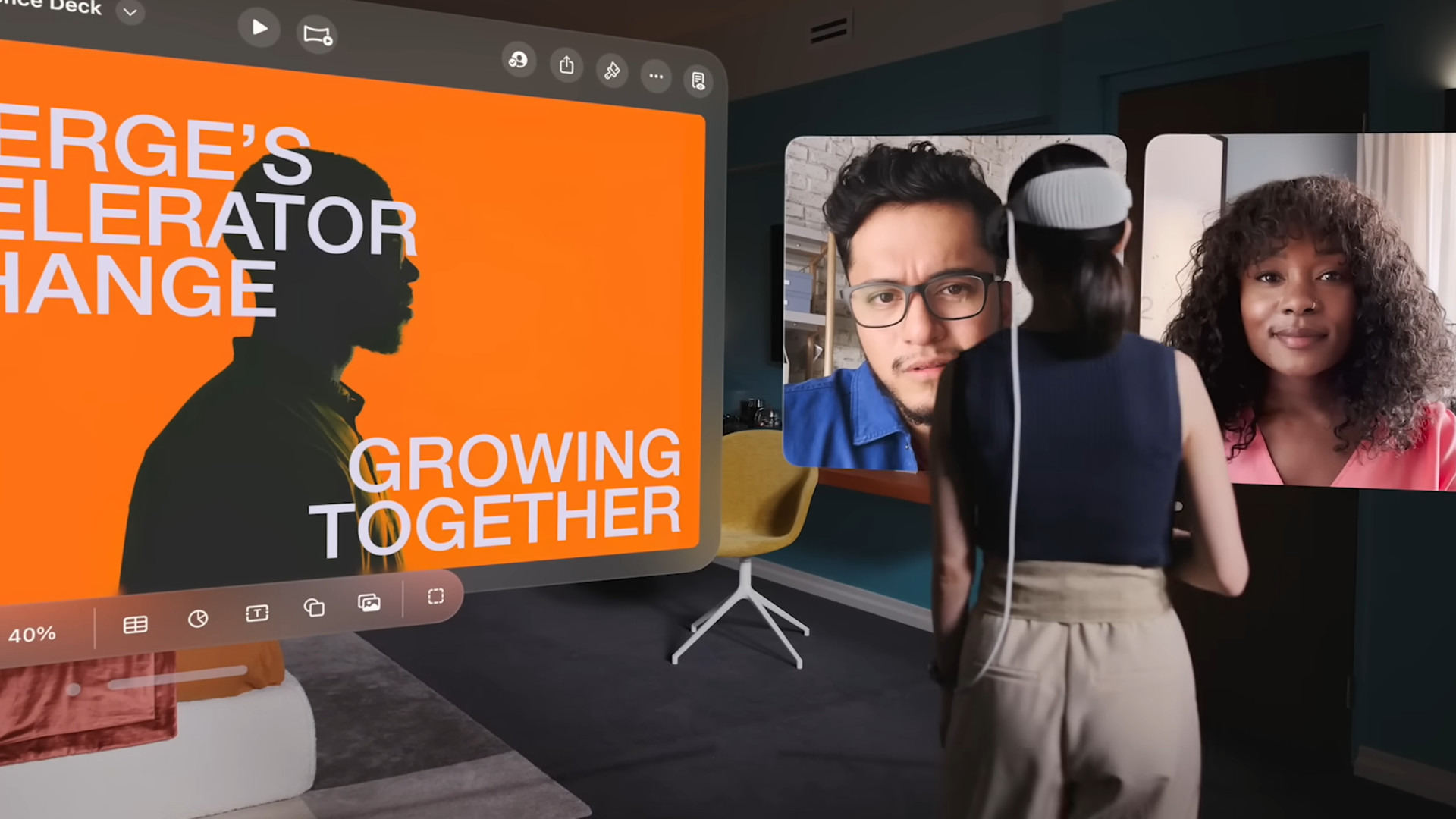There's one thing the Apple Vision Pro needs to learn from the Meta Quest 3
The Apple Vision Pro needs to learn what fun is

I’m struggling to care about the Apple Vision Pro – and I haven’t known why. Developers I’ve spoken to say they adore the validation and new possibilities the Apple headset provides, tech pundits that have had zero interest in VR before have fallen head over heels in love with the gadget. And heck, even Meta and Qualcomm staff I’ve spoken to in the past couple of weeks are excited to see what Apple has up its sleeve.
At the same time, I care a lot about the Meta Quest 3; I’ve literally counted down the days until its release on October 10 when I can get my hands on one again (after trying it out for our hands on Meta Quest 3 review). Yet fundamentally the Quest 3 and Vision Pro aren’t all that different given their shared focus on mixed reality rather than virtual reality – with their efforts so far proving that MR isn’t as gimmicky as it felt even a year ago when the Meta Quest Pro launched.
And then it finally hit me, I worked out what the Apple Vision Pro is lacking, and what it desperately needs to learn from the Meta Quest 3. It needs to learn to show off its wild side.
Bland beige vs vivid virtual reality
If you sit down and watch Apple’s almost 10-minute-long Vision Pro introduction video (or the shorter roughly minute-long trailer), you’ll notice two things. Firstly the color palettes consist of mostly beige, white, black, and navy – the same boring set as the iPhone 15 Pro colors. Secondly, the headset is basically used for four things – work, meetings, watching TV, and recording spatial video. In a nutshell, the Apple headset looks boring.

In contrast, Meta’s Quest 3 trailers are boisterous affairs. Players are ripping holes to the Upside Down in their ceiling, busting ghosts that have invaded their home, working up a sweat in dance workouts, and fighting giant scorpions – as well as enjoying TV on a large virtual screen, socializing with people in and out of mixed reality, and using it for work and education (like this one trailer showing someone learning the piano thanks to the headset).
I understand there’s an element of the Meta Quest 3 and Apple Vision Pro having different audiences – something demonstrated by their wildly different prices. The Quest 3 starts at $499.99 / £479.99 / AU$799.99 while the Vision Pro costs seven times more at $3,499 (around £2,800 / AU$5,300) – and that’s just its cheapest model. The Vision Pro isn’t going to be bought by many regular folk.
At the same time, we know that the Quest Pro isn’t just for professionals. As I mentioned already, in the trailers we see it used to watch TV and for recording family moments, and games are coming to the Apple headset too. Demeo – a mixed reality game that features in the Quest 3 trailer – is confirmed to be heading to the Vision Pro as are over 100 Apple Arcade titles. Plus Apple has mentioned wanting to create bespoke entertainment opportunities with partners like Disney.
Sign up for breaking news, reviews, opinion, top tech deals, and more.
These kind of experiences are leveraged by Meta to show the Quest 3 as a gadget that exudes delight. Apple has instead ignored them to a certain extent, and has somehow managed to paint virtual and mixed reality – a sector full of thrilling gadgets – as something stale.

Given these portrayals, I know which VR headset I’d rather pick up – and it’s not the one that’s being presented as bland.
If Apple wants to convince people to drop an irresponsibly high amount of money on its first-ever VR headset, it needs to makes us really want it. So far, its failed but it still has time.
I think the Vision Pro has the potential to be the most exciting XR gadget of 2024. Moreover, it has the potential to be the most exciting of the 2020s if Apple plays its cards right. But right now, it kind of feels like Apple is considering folding its pocket aces by not letting its Vision Pro look as awesome as it could be.
You might also like:

Hamish is a Senior Staff Writer for TechRadar and you’ll see his name appearing on articles across nearly every topic on the site from smart home deals to speaker reviews to graphics card news and everything in between. He uses his broad range of knowledge to help explain the latest gadgets and if they’re a must-buy or a fad fueled by hype. Though his specialty is writing about everything going on in the world of virtual reality and augmented reality.